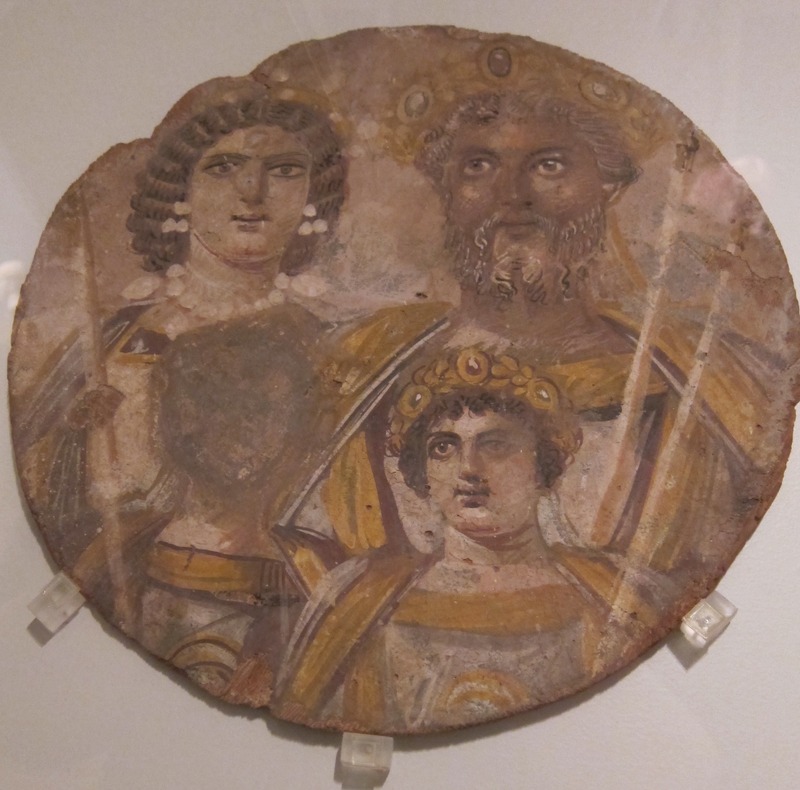Severan Dynasty

Painted tondo showing Septimius Severus and family, with Geta's face rubbed out posthumously as required under the Roman practice of "damnatio memoriae".4
The Severan Dynasty was established in 193 C.E. by Septimius Severus, a ruler born outside the city of Rome in present-day Libya. He climbed military ranks until gaining power during a period of political unrest. Septimius was well regarded for his campaigns against the Parthians (a people located in present-day Iran/Iraq).1 His familial dynasty, however, was plagued with scandal and death, especially in regards to his heirs.
He and his wife, Julia Domna, raised two sons, Caracalla and Geta, who jointly ruled together in 211 C.E upon Septimius’ death. Caracalla went on to murder his brother, and subsequently ruled from 211-217 C.E. His reign ended when he was assassinated as a result of his known cruelty and bribery.2 Power was then inherited by a series of cousins, ending with Alexander Severus, who ruled as the final emperor of the Severan Dynasty. The end of this familial line in 235 C.E. is often considered the start of the “Crisis of the Third Century,” a progression of weak emperors that contributed to general instability and discord. 3
______________________________________________________________________________
1. Anthony Birley, Septimius Severus: The African Emperor (London: Eyre and Spottiswoode, 1971), 155.
2. Birley, Septimius Severus, 191-192, 199.
3. Birley, Septimius Severus, 195.
4. “Painted Tondo of Septimius Severus, Julia Domna, Caracalla, and Geta,” Piranesi in Rome, accessed November 3, 2016, http://omeka.wellesley.edu/piranesi-rome/admin/items/show/74.